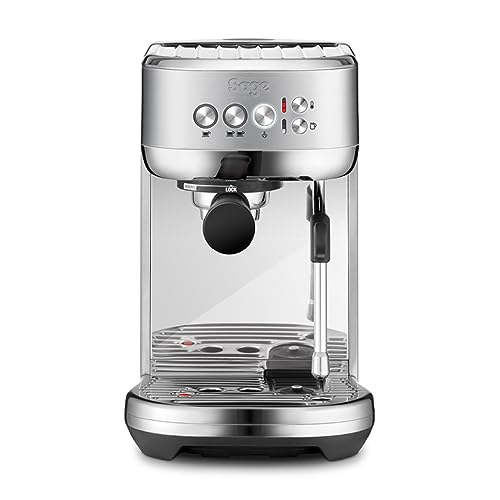How to Make Espresso Machine Coffee
An espresso maker can make delicious cups of coffee, but it needs some extra installation and maintenance than a regular drip coffee maker. It also requires you to grind and tap your own beans.
The secret to making espresso is pressure. How an espresso machine works is that the heating vessel heats the water to a perfect temperature, then forces it out of the spouts and through the grounds.
Temperature
Espresso is made when hot water is forced under pressure through finely ground coffee. The temperature of the water is critical to the quality of the final shot. Low temperatures lead to a absence of flavor compounds. High temperatures cause over extraction and can lead to a bitter or burnt taste.
The ideal temperature for espresso is between 195 and 205 degrees Fahrenheit. This temperature can be achieved by using a grouphead designed to maintain an even temperature and stability throughout the brewing process. The E61 is the most well-known group head, as it offers temperature stability, pre-infusion capability, and lever control.
It is important to take into account the temperature when you adjust your espresso machine for different roasts or brew ratios. This will affect the extraction yield and the crema. The ideal temperature will vary on the particular roast and bean, but the general rule is that lighter roasts and higher brew ratios require higher temperatures than darker roasts and lower ratios of brew. In addition, a good thermocouple that is of high-quality will be crucial for maintaining a consistent temperature.
Pressure

During the brewing procedure espresso machine coffee is pushed under pressure through finely ground coffee grounds that have been stamped. This triggers chemical reactions which extract flavors, oils and other soluble ingredients from the beans. The resulting drink is usually richer and more flavorful than regular coffee.
The ideal espresso machine pressure should be nine bars that's equivalent to the pressure of the ocean at sea level. The soluble compounds present in the espresso bean can be best extracted at this pressure.
However some espresso machines advertise as high as 20 or 15 bars of pressure. These machines might be able to reach these pressure levels, however, they might not be able to maintain them throughout the extraction.
To put that in perspective To put it in perspective, one bar of pressure is equivalent to 32 pounds per square inch, or PSI, of the tire of a car. It's four times the pressure a professional cyclist utilizes to fill their bike tires. Any serious home barista needs to be able to control the pressure of their espresso machine and make consistent espressos.
Water
Water is the most important ingredient in a delicious cup of espresso. retro espresso maker will assist your beans in reaching their full potential, while the wrong water can lead to issues like clogged pipes, or even harm your expensive espresso machine.
For the best extraction of espresso it is recommended to choose a natural spring with high mineral content. This water will elevate the taste of your brew without the chalky mineral trace that comes from tap or bottled water. This is a great alternative to distilled or reverse osmosis water, which can be too pure and cause issues with flavor.
You should not utilize a water filtration device that removes excessive mineral content from the water you drink. This can cause flavor and extraction issues. Get a water test kit to determine the average hardness of the water you drink in your area. This information can be used in determining the best filtration system for your espresso machine.
Beans
Most coffee drinkers tend to be extremely involved throughout the process of making espresso. They obsess about a number factors, such as temperature, water pressure and viscosity. If one factor is slightly off, the whole shot may be sour.
The most important aspect when it comes to espresso is the beans used. Many believe that only certain varieties are suitable for espresso. While some beans are better than others for specific purposes however, any roast can be used for espresso. The main difference between espresso beans and regular coffee beans is that espresso beans are roasted more and tipycally over the second crack, which gives them more of a dark appearance and makes them more soluble in water.
The best beans for espresso tend to be medium or dark roasted, which gives the espressos their distinctive richness and boldness. Lightly roasted beans can be used to make fantastic espresso, especially when they're pre-ground for convenience in an espresso maker.
Milk
Espresso and milk is a timeless combination. The combination of espresso and milk is an iconic. Not only does it increase energy levels but it also helps balance the bitterness of the espresso. This is among the best pairings for a meal!
When you are choosing an espresso machine capable of making latte or a cappuccino as well it is important to consider how easy it will be to use. A majority of the top espresso machines come with a jug of hot or cold milk and a steam wand. They also have an in-built portafilter to take the shot. Certain models also come with a built-in grinder, tamper and frother.
To get rid of any condensed liquid, the steam wand must be purged each day before use (or after every cup of espresso). The process takes only 30 seconds, yet it is essential to keep your machine running smoothly. Failure to purge can cause bitter taste or accumulation of bacteria that may alter the flavor and aroma of your beverages. It's simple to do and should form part of your regular maintenance routine.
